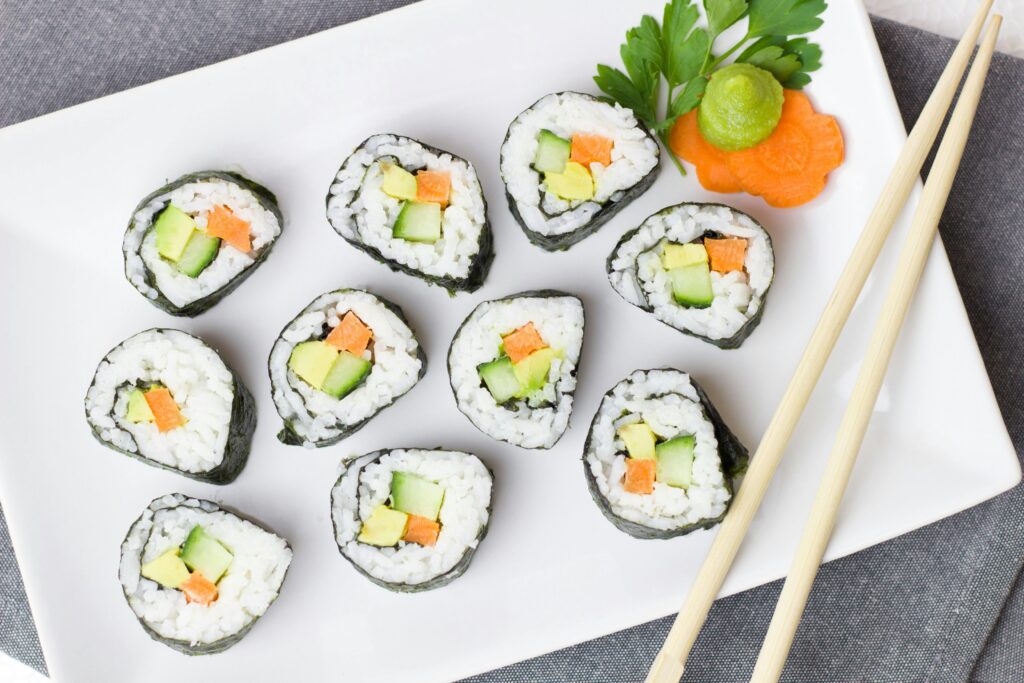Sushi lovers know that the right rice can make or break this beloved dish. Among the myriad of options available, Botan rice has emerged as a standout choice for sushi enthusiasts. But what is it about Botan rice that sets it apart? From its rich history to its unique flavor profile, this grain deserves a closer look. Whether you’re a seasoned chef or just starting your sushi-making journey at home, understanding the qualities of Botan rice can elevate your culinary creations. Let’s dive into why this particular variety might just be the perfect fit for your next sushi roll.
The history of Botan rice
Botan rice, known for its short grain and sticky texture, hails from Japan. Its origins trace back centuries, rooted in the country’s agricultural traditions. Farmers cultivated this rice variety to thrive in Japan’s unique climate and soil conditions.
The name “Botan” translates to “peony,” reflecting its connection to beauty and nature. This elegant flower symbolizes prosperity and abundance—fitting attributes for a staple food that has nourished generations.
In post-World War II Japan, Botan rice gained popularity as people sought quality ingredients for their meals. The rise of sushi culture further propelled its status among chefs and home cooks alike.
Today, Botan rice is not just a culinary choice but also a representation of Japanese heritage. Each grain tells a story of tradition, craftsmanship, and the enduring love for authentic flavors.
What makes Botan rice stand out for sushi
Botan rice is a standout choice for sushi due to its unique texture and flavor profile. This short-grain Japanese rice cultivates a slightly sticky consistency, making it ideal for rolling and molding into perfect sushi shapes.
The grains are plump and round, ensuring that they adhere well without becoming gummy or overly mushy. When cooked correctly, Botan rice maintains an al dente bite that enhances the overall eating experience.
Its subtle sweetness complements the umami flavors of fresh fish and vegetables beautifully. The balance between taste and texture is what many sushi chefs appreciate most about this variety.
Additionally, Botan rice absorbs seasonings exceptionally well. Whether you’re using vinegar for nigiri or preparing flavorful rolls, it acts as an excellent canvas for various ingredients while retaining its integrity in each dish prepared.
Nutritional benefits of Botan rice
Botan rice is more than just a delicious choice for sushi; it packs a nutritional punch. This short-grain rice is rich in carbohydrates, providing the energy needed for an active lifestyle.
Its low-fat content makes it a healthier option compared to many other grains. Packed with essential vitamins like B6 and folate, Botan rice supports metabolic functions and promotes overall well-being.
Additionally, this variety contains minerals such as iron and magnesium. These are crucial for maintaining proper muscle function and enhancing immune health.
Moreover, because of its gluten-free nature, Botan rice appeals to those with dietary restrictions while still offering satisfying texture and taste. Incorporating this nutritious grain into your meals can contribute positively to your diet without sacrificing flavor or quality.
Comparing Botan rice to other types of rice used in sushi
When it comes to sushi, not all rice is created equal. Botan rice often stands out against traditional varieties like short-grain and medium-grain sushi rice.
Unlike typical Japanese rice that can be overly sticky, Botan has a slightly firmer texture. This makes it easier to handle while rolling or shaping your sushi.
Another distinction lies in the flavor profile. Botan rice boasts a subtle nuttiness that adds depth to each bite, enhancing the overall taste of your rolls.
While other rices may sometimes overpower delicate ingredients, Botan maintains balance beautifully.
Additionally, many chefs appreciate its ability to retain moisture without becoming mushy. This quality ensures that the integrity of both the filling and the presentation remains intact throughout your dining experience.
Choosing between these options can shape your dish dramatically; therefore, considering what each type brings is essential for any sushi lover.
Reviews from sushi chefs and customers on Botan rice
Sushi chefs often rave about Botan rice for its exceptional quality. Many appreciate its sticky texture, which is perfect for shaping sushi rolls and nigiri. They note how it holds together beautifully, enhancing the overall presentation.
Customers share their love as well. Home cooks enjoy the ease of preparation and the delightful taste that elevates their homemade sushi experience. The subtle nutty flavor adds a unique twist that keeps diners coming back for more.
Feedback highlights Botan rice’s ability to complement various fillings without overpowering them. This balance allows flavors to shine through, creating a harmonious bite every time.
Even seasoned sushi enthusiasts remark on the difference in quality when using Botan rice versus other varieties. It’s not just another ingredient; it’s an essential component that transforms simple sushi into something memorable.
Tips for cooking with Botan rice
Cooking with Botan rice can elevate your sushi game. Start by rinsing the rice thoroughly to remove excess starch. This step is crucial for achieving that perfect texture.
Next, consider soaking the rice for about 30 minutes before cooking. This allows each grain to absorb water evenly, resulting in a tender bite.
When it’s time to cook, use a ratio of 1 cup of rice to 1.2 cups of water. Adjust this slightly based on your preferred texture—less water for firmer sushi and more for softer results.
After cooking, let the rice steam off heat for another 10-15 minutes without lifting the lid. This ensures even moisture distribution throughout.
Season your cooked Botan rice with a mixture of vinegar, sugar, and salt while it’s still warm. Mix gently to avoid breaking any grains; this will enhance flavor and keep everything cohesive when rolling or molding into shapes.
Conclusion: Is Botan rice the perfect choice for sushi?
When considering the right rice for sushi, Botan rice emerges as a strong contender. Its history reflects a dedication to quality, cultivated in ideal conditions that enhance its flavor and texture. Unlike other types of rice commonly used for sushi, Botan rice offers unique characteristics that elevate the dining experience.
The nutritional benefits are noteworthy too. High in fiber and packed with essential nutrients, it caters not only to taste but also to health-conscious consumers. Feedback from sushi chefs highlights its superior stickiness and ability to hold shape without compromising on flavor.
Cooking with Botan rice can be straightforward if you follow some simple tips: rinse thoroughly before cooking, use the correct water-to-rice ratio, and allow it to steam after cooking for optimal results. These steps can make all the difference between average sushi and an exceptional one.
So when pondering whether Botan rice is the perfect choice for your sushi creations or restaurant menu, it’s clear this variety brings much more than just sustenance; it adds authenticity and quality that many have come to appreciate. Whether you’re a seasoned chef or an enthusiastic home cook looking to impress at your next gathering, giving Botan rice a try could open up new culinary horizons.



